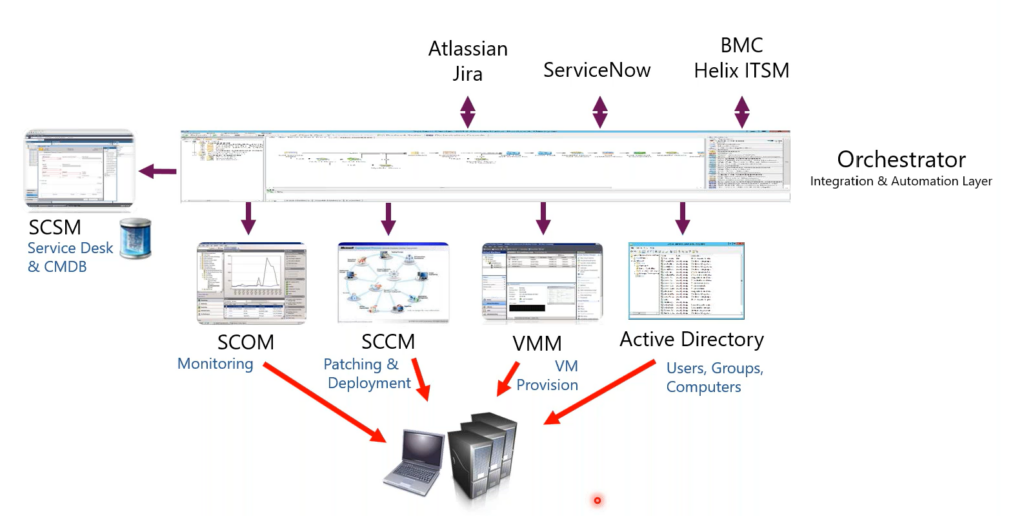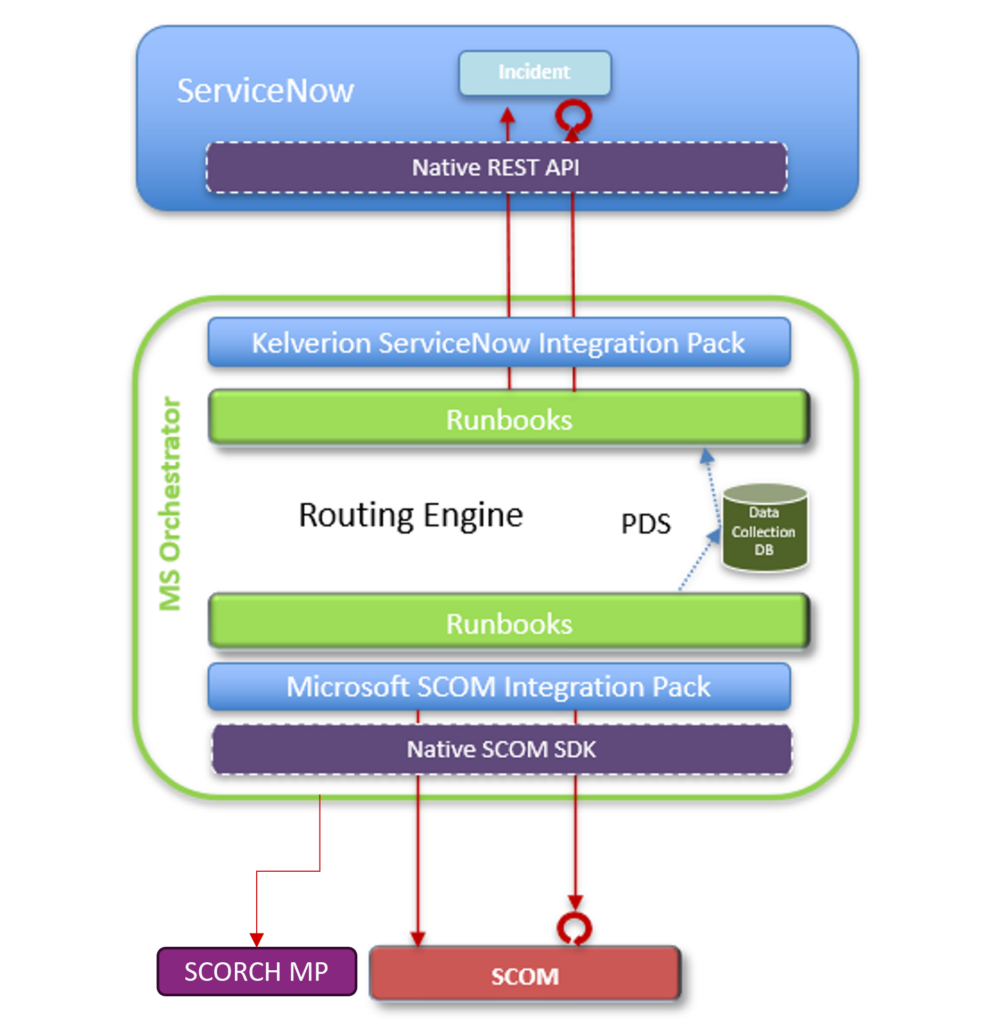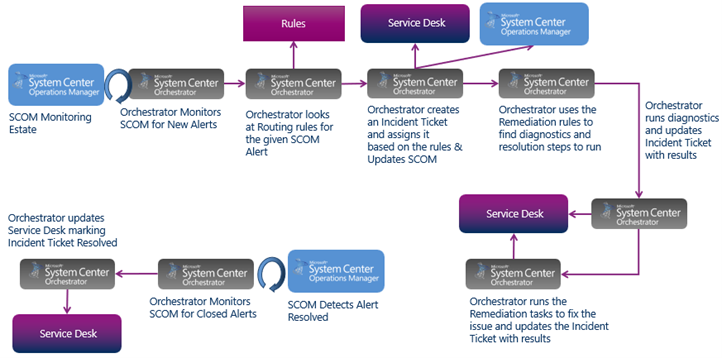The IT landscape is currently evolving faster than ever before, and the move to cloud-based solutions has emerged as a game-changer for businesses looking to future proof their infrastructure. However, the move to cloud solutions is not always straightforward and comes with challenges due to changes in management access. This move to cloud-based solutions also results in companies running hybrid infrastructures and then struggling with monitoring part of their infrastructure on-premise and part in the cloud to achieve a consistent view of everything.
Many companies are already grappling with the complexity and time-consuming nature of identifying and resolving infrastructure issues and the challenges that arise. This impacts service quality and efficiency, resulting in more alerts and an increase in the number of Incident Tickets that IT teams need to handle.
Therefore, organizations are increasingly looking for ways to automate the manual processes around Infrastructure Monitoring to free up senior staff to work on critical initiatives and reduce mean time to repair. With the growth of AI, the desire for automated outcomes is only going to increase.
We recently held a webinar with one of our key partners NiCE on elevating your IT infrastructure monitoring and automation with Microsoft System Center.
With decades of experience in monitoring software, NiCE specializes in monitoring solutions for both traditional SCOM (System Center Operations Manager) and Azure environments, including IBM power systems and Linux systems within Azure. Additionally, their application management packs cater to servers running various databases like Oracle, DB2, and MongoDB.
For Microsoft 365, NiCE has built management packs for active monitoring, and this is a prime example of how third-party monitoring solutions can be crucial to ensure immediate issue identification, especially for critical systems like Teams.
The challenge for many companies is elevating their monitoring capability and dealing with the resulting issues detected, but things have changed. The partnership between NiCE and Kelverion enables all companies to extend the scope of their monitoring horizons and automate the diagnosis and remediation of issues with Microsoft System Center.
Where Does Orchestrator Fit in the Microsoft System Center Suite?
Not all Microsoft System Center users are familiar with Orchestrator, so let’s take look at where it fits in the wider scope. In the infrastructure management space, there are several well-known tools. Operations Manager keeps an eye on things, while System Center Configuration Manager handles updates and software deployment. Microsoft’s Virtual Machine Manager oversees both Hyper-V and VMware setups, and Active Directory manages logins and operations across Microsoft’s ecosystem.
Adding to this lineup, Microsoft developed System Center Service Manager, a service desk solution. However, integrating these various System Center products was a challenge.
Microsoft added System Center Orchestrator to the suite in order to bridge the gap between various Microsoft tools, which allowed coordination and automation between tools, such as picking up alerts from Operations Manager, creating tickets in Service Manager, and executing remediation actions. It also facilitated interactions with virtual machines, patching through SCCM, and other relevant tasks.
However, many businesses have other enterprise management tools, and usually a separate service desk. So Kelverion produce integration packs for the wider infrasture to help IT teams achieve efficient and reliable infrastructure.

To enable this infrastructure monitoring and automation, Orchestrator Operations Manager need to work together.
How do SCO and SCOM Work Together?
Orchestrator features integration packs that provide connectivity with various enterprise management tools.
Automation is achieved through runbooks, which execute actions and tasks based on these alerts. An integration pack links Orchestrator with SCOM and a further Integration Pack links Orchestrator with a Service Desk such as ServiceNow (shown below), enabling automated ticket creation in response to alerts, with the ticket number seamlessly integrated back into Operations Manager.

Orchestrator serves as a hub for integrations with different tools, enabling seamless communication and interaction, while runbooks manage the automated tasks being performed between them.
Additionally, there’s a management pack within Operations Manager specifically for managing Orchestrator, which essentially serves as a monitoring tool to ensure the smooth functioning of your System Center Orchestrator environment. It examines services, event logs, and certain policies to assess the health of the system.
Infrastructure Monitoring and Automation in Action: How Does it all Work Together?
Operations Manager and Orchestrator provide an end-to-end view of the management and monitoring processes.

Operations Manager monitors the system state, while Orchestrator keeps an eye on Operations Manager for new alerts.
When an alert surfaces, Orchestrator applies predefined rules to determine the appropriate action. For instance, it can automatically generate an incident ticket in the service desk and assign it to the relevant support team based on the nature of the alert. Whether it’s an issue related to SQL, MongoDB, VMware, or other systems, Orchestrator ensures that the ticket reaches the appropriate team for resolution.
Once the incident ticket is created, Orchestrator closes the loop by updating Operations Manager with the ticket details. This end-to-end process allows users to track the alert, monitor ticket creation and resolution, and manage the entire workflow according to their business processes.
Whether resolving issues through the service desk or managing operations directly from Operations Manager, the closed-loop system ensures smooth operation.
Orchestrator can take automation a step further by creating and assigning tickets and automatically resolving issues based on a set of rules that have been implemented. This streamlines the process further, removing the need for manual work and ensuring prompt resolution of alerts.
Orchestrator Ticket Diagnostics and Remediation
Orchestrator steps in to streamline the process when diagnosing issues. It can run various diagnostics, such as checking event log messages from the last five minutes, retrieving netstat information, pinging the box, and verifying service statuses. Orchestrator then updates the incident ticket with the diagnostic results, and if needed, it can even push these results back into Operations Manager.
And Orchestrator doesn’t stop there, it even automates remediation steps based on the diagnostic findings and updates the incident ticket with the results. This means that as soon as an issue is detected and a ticket is created, automation kicks in to perform diagnostics and start remediation automatically.
Operations Manager then detects the alert being resolved, triggering Orchestrator to update the service desk and mark the incident ticket as resolved. By automating these processes, Orchestrator eliminates the need for any manual steps in fixing issues that occur, such as service failures, virtual machine issues, or disk space shortages.
Infrastructure Monitoring and Automation Summary
By expanding infrastructure monitoring with automation, operations teams can focus their efforts on more critical tasks and problem resolution rather than spending valuable time on routine incident resolution. It enables teams to address the root causes of recurring issues and improve overall system reliability and stability.
Customers turn to Kelverion & NiCE to leverage their existing System Center investment, avoiding the need for additional costly tools or complex setups. By seamlessly integrating infrastructure monitoring and automation, together we offer a streamlined solution for managing diverse processes and environments effectively.

About Kelverion
Experts in Cloud, On-Premise and Hybrid automation, Kelverion provide solutions and integrations that remove the manual process tying up IT staff; transforming the productivity, efficiency, and supportability of IT service automation. Our products utilize and enhance the power of Microsoft Azure and System Center Orchestrator.
Working closely alongside Microsoft we have developed our integrations and automation solutions to help bridge the gap between Microsoft’s automation platforms and third-party systems, in the process building key alliance partnerships with multiple vendors to ensure our products are fully certified. Find Kelverion on the Azure Marketplace.
Since 2010, Kelverion has expanded to become a global company, with offices now in the UK, Canada, and the US. Through this, we are able to offer and support products and professional services engagements to enterprise-level organizations no matter where they are.
For more information, to arrange a discovery call or to see a demonstration please contact our helpful team today via info@kelverion.com.




